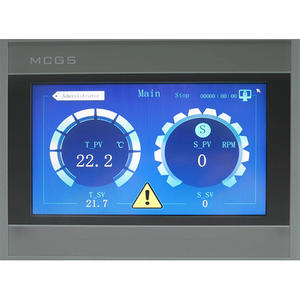High-pressure environments are essential for many chemical reactions, including polymerization, hydrothermal synthesis, and catalysis. However, controlling the pressure in these environments can be challenging, and it requires specialized equipment. That's where the High Pressure Reactor Controller comes in. In this article, we will explore the features and benefits of this critical device.

1. What is a High Pressure Reactor Controller?
A High Pressure Reactor Controller is a device that controls the pressure in a high-pressure reactor. It is designed to work with a pressure vessel, which is a container that can withstand high pressures. The High Pressure Reactor Controller is connected to the pressure vessel and regulates the pressure inside it by controlling the amount of gas or liquid that is introduced into the vessel.
2. Features of a High Pressure Reactor Controller
The High Pressure Reactor Controller has several features that make it an essential tool for high-pressure environments. These include:
- Pressure control: The High Pressure Reactor Controller can precisely control the pressure inside the reactor vessel. It can increase or decrease the pressure as needed to maintain a consistent pressure level.
- Temperature control: The High Pressure Reactor Controller can also control the temperature inside the reactor vessel. It can heat or cool the vessel as needed to maintain a consistent temperature level.
- Data logging: The High Pressure Reactor Controller can record data about the pressure and temperature inside the reactor vessel. This data can be used for analysis and quality control.
- Safety features: The High Pressure Reactor Controller has safety features that prevent overpressure or overheating. It also has an emergency stop button that can shut down the system if needed.
3. Benefits of a High Pressure Reactor Controller
The High Pressure Reactor Controller offers several benefits for high-pressure environments, including:
- Precision control: The High Pressure Reactor Controller provides precise control over the pressure and temperature inside the reactor vessel. This ensures that reactions occur under optimal conditions, leading to higher yields and better quality products.
- Time savings: The High Pressure Reactor Controller can automate the pressure and temperature control process, saving time and reducing the risk of human error.
- Safety: The High Pressure Reactor Controller has safety features that prevent accidents and ensure that the system operates within safe limits.
- Data analysis: The High Pressure Reactor Controller can record data about the pressure and temperature inside the reactor vessel. This data can be used for analysis and quality control, leading to better process optimization and product development.
4. Applications of a High Pressure Reactor Controller
The High Pressure Reactor Controller is used in a wide range of industries, including:
- Chemical manufacturing: The High Pressure Reactor Controller is used to synthesize chemicals under high-pressure conditions, such as for polymerization or catalysis.
- Food processing: The High Pressure Reactor Controller is used to sterilize food products under high-pressure conditions, such as for canning or pasteurization.
- Materials science: The High Pressure Reactor Controller is used to synthesize materials under high-pressure conditions, such as for hydrothermal synthesis or crystal growth.
5. Conclusion
The High Pressure Reactor Controller is an essential tool for controlling pressure and temperature in high-pressure environments. It offers precise control, time savings, safety features, and data analysis capabilities, making it an ideal choice for chemical manufacturing, food processing, and materials science applications. By using a High Pressure Reactor Controller, scientists and engineers can optimize their processes, develop new products, and ensure that their products meet high-quality standards.